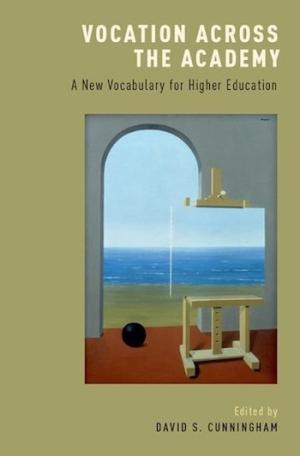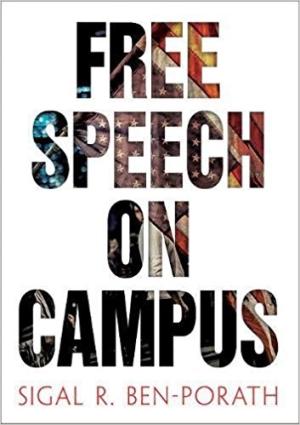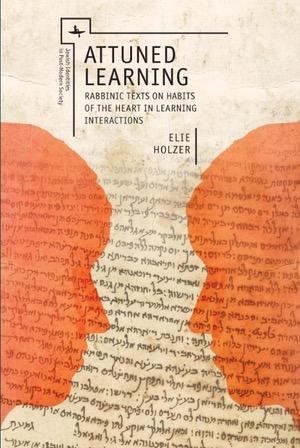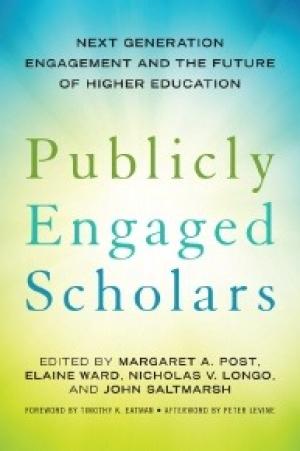Resources by Frederick W. Schmidt

Against the backdrop of growing debate over both the nature and value of higher education, David Cunningham and twelve scholars offer what they believe may serve as a “common purpose” – vocation. Along with the word, “calling,” vocation has theological roots, but Cunningham argues that a “more expansive” approach to the word “is attentive to questions of profession, work, and employment” and “encompasses a much broader range of concerns that will arise during a college student’s current and future life.” The writers of this volume do not believe that appealing to the concept of vocation will eliminate conflict swirling around competing visions of the academy, but they do believe that the concept appeals to both the roots of the modern university and the goals of faculty from across the academy (3). With that goal in mind, Cunningham and his co-contributors divide their effort into four parts. Eschewing a disciplinary-centered approach to their work, they instead consider “four different pathways or approaches through which the disciplines can come into conversation with one another: first by emphasizing certain themes that are common to them all; second, by borrowing concepts from one discipline that can apply to many other disciplines; third, by focusing on the future lives of undergraduates…; and fourth, by considering some of the institution-wide obstacles that need to be addressed if the language of vocation and calling is to be perceived as relevant to all academic departments and programs” (14). In a closing epilogue, Cunningham notes that the volume demonstrates that neither vocation nor calling exhaust the concerns that arise from their use in the academy. The words, “responsibility, character, virtue, mission, covenant, mapmaking, storytelling, performance, work, [and] leisure,” along with others, figure in the contributions to this volume (315). That should come as no surprise, he argues. From the very beginning, Cunningham commends a definition of vocation that is “capacious, dynamic, and elastic” (315, cf. 10ff.). Accordingly, he argues that one should approach the issue of vocation prepared to use multiple vocabularies that reveal different, but interrelated discoveries. To have a vocation means that one is shaped by that calling (317ff.); that one is summoned “from without” (319f.); that one must decide what to do (320f.); that those who are called inevitably consider their link to the callings of others (321f.); and that they are compelled to think about the impact their vocations will have on the future (322ff.). This is the second of three volumes in an ambitious and welcome effort to recapture the inspiration of vocation as a locus for higher education. The first, published in 2015 under the title, At This Time and in This Place, focused on pedagogy. The third, published in January of 2019 appeared under the title, Hearing Vocationally Differently, and expands on the vocabulary associated with vocation, relying on contributors from diverse religious traditions. One may well wonder what the prospects will be for the project of this series. Embattled as the academy is – by forces both within and without – one would hope that scholars will find a common inspiration that will lend new energy and focus to their work. But even cursory attention to the debates roiling college and university campuses underlines the truth that “an optimist is someone who is not in possession of all the facts.” It is difficult to believe that disciplines that are struggling to define a shared vision of the work that they are doing could agree on a vision for the larger work to which the whole academy is devoted. The task that the writers propose is made all the more difficult by the choice of “vocation” as the organizing principle around which they attempt to rally their readers. As Cunningham himself observes, the verb vocare is transitive (317). As such, it implies that one is not only called, but one is also called by someone or something. The absence of a shared understanding of who or what issues that call - if anyone or anything does – underlines how little shared vision may be in the offing for the modern academy. For theological educators the answer to that question and others ought to be easier to achieve, but anyone who teaches in the modern divinity school knows better than that. As seminaries struggle to address declining enrollments, degree programs are crafted with an eye to the individual’s goals and the notion of vocation – and the spiritual formation that accompanies it – has slipped again to the margins of theological education. Where it still lingers, it is necessarily governed by private definitions. In the meantime, seminary faculties differ with one another as much or more on such questions as the faculties at any college or university. The effort made by Cunningham and his co-contributors comes, then, as both question and indictment: What is it about the concept of vocation that leads even a small but brave cohort of scholars without shared confessional commitments to imagine that they can galvanize their work around the concept? The indictment is this: What are the factors that have relegated the question of vocation to the margins of the very institutions that gave birth to the vocabulary?

In Free Speech on Campus, Sigal R. Ben-Porath outlines her focus at the outset: “I offer a framework for thinking about free speech controversies both inside and outside the classroom, shifting the focus away from disputes about legality and harm and toward the practical considerations linked to education and inclusion. I attempt to provide readers with strategies to de-escalate tensions and negotiate highly charged debates surrounding trigger warnings, safe spaces, and speech that verges on hate” (3). In order to accomplish her task Ben-Porath uses the first four chapters of her book to describe the “current tools” used to protect free speech and the “common myths” that cloud leaders’ understanding of the problem (7-28). She offers a “framework for inclusive freedom” (29-46) and notes the ways in which that framework can be used to respond to “intellectual and dignitary harms. . . without suppressing speech” (47-84), and then she describes the ways in which the same approach can be deployed in the classroom (85-102). In the conclusion to her book she then shows how conflicts that she has cited elsewhere could have been resolved by relying on “inclusive freedom” (103-128). The concrete illustrations include the debate over Halloween costumes and safe spaces at Yale (13); racial equality in Missouri (13-14); trigger warnings in Chicago (14); and controversial speakers at Berkeley and Middlebury (15-17). Ben-Porath depicts three tools that have been used by colleges and universities to respond to such conflicts: Some have appealed to the First Amendment and the freedom of speech; others have appealed to academic freedom; and still others have used “speech codes” to control dialogue on campus (18-20). These tools “pull in different directions” and Ben-Porath notes that there are subtleties on campus that often escape notice (21). Academic freedom, not freedom of speech, is the “core value” of America’s campuses – that commitment conditions the right to free speech, prohibiting things like plagiarism and the misrepresentation of the results of research, even if the First Amendment protects such conversation (20). “Inclusive freedom” offers a different approach. It is based upon a commitment to two key principles: “First, a commitment to teaching and research can only be fulfilled in the context of an open-minded and intellectually honest environment” (74); and “Second, all members of the campus community must know that they are invited to participate in this pursuit” (74). Readers of Ben-Porath’s work will have questions: (1) Is there a bright line between society’s concern with the freedom of speech and academic freedom on its campuses? If, as the author notes, university campuses are “both the mirror of American democracy and the window into its future” (8), can universities and society be so easily isolated? (2) Could issues of plagiarism and the misrepresentation of research results be ethical matters and, therefore, unrelated to the question of how freedom of speech and academic freedom differ and overlap? (3) More importantly, can Ben-Porath be so sure that the strife on America’s campuses can be avoided or defused? Those who perceive themselves as the architects of a new social order or who see societal battles as a zero-sum game will not be easily dissuaded. (4) Readers will also wonder if Ben-Porath undermines her project by presupposing that the categories of harm and violence are appropriately applied to academic discourse. As long as one assumes that language can be violent, then opening discourse to contributions from diverse perspectives will always be constricted by the possibility that one will be charged with acting immorally. (5) Finally, on a practical note, readers will find that the author’s method is not as clearly outlined as it should be in such a brief treatment of the subject. Questions aside, those who teach in North America will recognize some of the debates that Ben-Porath describes. The conflict that abruptly ended the deanship of Professor Elaine Heath at Duke Divinity School illustrates how intractable and bitter debates can be about these issues. For those who teach on seminary campuses, there are added layers of complexity. To one degree or another, issues of Christian community, formation, and participation in the life of the church are concerns unique to theological education. In addition, notions of belonging and academic freedom are conditioned in seminaries by centuries of debate over what makes for sound theology and authentic Christian community. For that reason, in the world of theological education, a solution to the volatility of conversation in the classroom and among its faculty is an even more urgent priority.

According to the publisher’s website, books in the series “Jewish Identities in Post-Modern Society” are dedicated to exploring the “multiple ways in which contemporary Jews express and define their Jewish identity.” The titles in the series “explore the sociological, historical, and psychological basis for these identities and the ways in which they reflect a rejection and or integration of the norms, morals, and values of post modern society.” Elie Holzer’s Attuned Learning is the eleventh contribution to that effort and his second contribution to the series. The purpose of the series helps to explain the approach that Holzer takes to his subject: Part One is devoted to “Conceptual Frameworks;” Part Two focuses on what “attuned learning” means for the “co-learners” devoted to the task; Part Three unpacks the implications of the theoretical framework for reading Rabbinic literature that Holzer outlines in Part One; and Part Four briefly explores the implications of his work for “Contemporary Contexts.” The nature of the series also explains why Holzer relies heavily on Hans-Georg Gadamer and Paul Ricouer, among others, for the philosophical assumptions that drive his work (20, 22-30). Arguing that “there is no such thing as an innocent reading” of any text, Holzer contends that the only antidote to self-deception is an honest effort “to clarify what lies at the basis of our interests as far as possible” (22-23). Students reading ancient texts must identify the “foremeaning or preconceptions” that shape their reading (24) and they must avoid “identifying the meaning of the text with the author’s intention. Instead, a text establishes its own form of discourse as soon as it is written, offering something to be appropriated by the reader” (26). Having laid out his philosophical assumptions, Holzer then describes the attuned learning that both teachers and students can accomplish, using the discourse in rabbinic literature as an illustration, source, and foil. “Argumentative learning” can be found there and has its contribution to make (47ff.), but – as Parker Palmer notes -- it is also “doubled edged” and can degenerate into “a secretive, zero-sum game played by individuals for private gain” (57). At the heart of rabbinic exchange, however, is what Holzer describes as chavruta, which he translates as “‘companionship’ or ‘friendship’” (41, n. 5). Attentive to the moral and emotional quality of the learning process and the roles that each co-learner plays, even conflict is placed in very different context. Teachers and students advance in their understanding by listening to one another, for which “the divine presence” or the “Shechina” (71ff.) is a metaphor and “‘God’ is understood primarily as some transcendent quality of a genuine interpersonal experience” (73). Teachers who recognize the importance of chavruta and the perils of argumentative learning are alert to the experiences of the learner and avoid the dynamics that lead students to experience their teachers as “uncaring” (112f.), “disgruntled” (114f.), or “incompetent” (116f.). Instead, Holzer argues, they are to attend to the “visage” of their students. They “see” their faces (129-130) and they look for “illumination” (130ff.). Likewise, the students “welcome” the faces of their teachers (135ff.) and receive the “visage” of their instructors (138ff.), indicating their willingness to enter into the partnered learning that has been offered. The result is a process in which “educators… never allow their active and curious presence to transform the learners’ presence into a shadow of their learners,” but “stimulate learners to live a critically conscious presence in the pedagogical and historical process” (159). There is a good deal to be absorbed here for the theological educator, especially as an antidote to teaching that is either sterile and concerned with subject matter alone or views the student as an object of deconstruction. As Holzer describes it, both approaches are equally immoral (149-150 and ns. 12 and 13). Theological educators will also find reasons to differ with the author. Writing for a broader and not necessarily religious audience, Holzer defines God and God’s presence in ways that are scarcely adequate if one conceives of God as more than a metaphor. Given the richness of the rabbinic tradition, one also wonders whether we might have learned even more, if Holzer had allowed the rabbis to reflect on what they believed about God as both a teacher and a student of Torah (88ff.). But, given his philosophical assumptions, that gift is strained through sieve of post-modern philosophy, skeptical as he is of innocent readings, let alone the voice of God. One wonders whether deeper attunement might have entertained the possibility that there was another Visage, longing to be welcomed into the conversation.

Preparing citizens through education is not a novel idea. Its origins lie in Greco-Roman approaches to the task, and in American history the goal of educating the citizenry can be traced back to Charles Sanders Peirce (1839-1914), William James (1842-1910), and John Dewey (1859-1952). Dewey, who was perhaps the most articulate about the implications of pragmatism for education, saw academic preparation for life in a democracy and the moral education of children as part of the same endeavor. The contributors to this volume acknowledge Dewey’s role in this enterprise, but do not explicitly explain why these essays represent the “next generation” of educators inspired by his vision. The best explanation, perhaps, is that they emphasize academic advocacy, as opposed to broader social wellbeing; engagement with society over preparation for engagement with society; and social location over citizenship as a point of departure for academic work. With that set of assumptions in mind, it is easier to discern the larger purpose of the sixteen essays in this volume which include an introduction and afterward, along with chapters devoted to three subject areas: (1) “The Collaborative Engagement Paradigm”; (2) the work of “New Public Scholars”; and (3) thoughts on “The Future of Engagement.” The vast majority of the contributors to this volume are specialists in education and programs in community engagement, and there are individual writers from the disciplines of art and political science. For that reason, some seminarians and seminary faculty will find more immediate points of contact with their work than others. Both groups will also find themselves asking – if education driven by engagement is appealing or necessary – whether the more natural point of contact for seminaries is the community, the church, or both. A critical evaluation of the essays will also raise other questions to which there are no simple answers: What is the place of “social relevancy and public legitimacy” in shaping the curriculum of higher education (1)? Can engagement as a model for learning set aside more abstract, disciplinary concerns (17)? What role has commodification played in shaping higher education and is learning through engagement immune to commodification (24)? To what degree do faculty members remain accountable to the disciplines that they represent when using engagement as a model for teaching and, if so, how is that accountability achieved? The answers to those questions will all look potentially different in theological schools and seminaries where faculty regularly grapple with the relationship between the work that they do and the needs of the church. Indeed, that realization may point to the most important question that the subject matter, but not the book itself, raises for theological educators: What does it mean for seminaries to engage the church “as reciprocal partners and coeducators” (5)? Answering that question is one that everyone who cares about theological education would do well to answer.